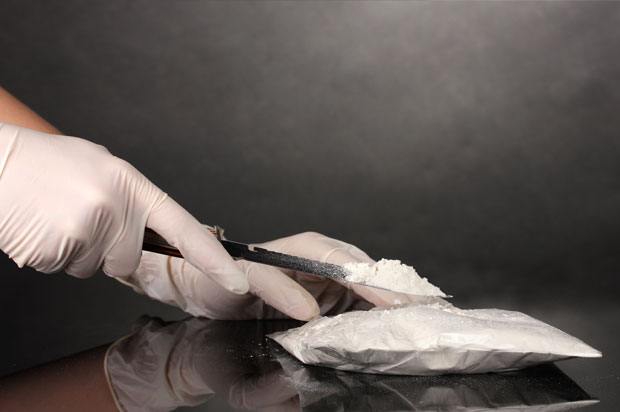How do drugs get here?
From cargo ships full of crack to drug mules on planes, we explain how drugs get to the UK.

Ooh-er, what's that doing in her Majesty's Royal Mail?
How much is the drugs industry worth?
As incredible as it may sound, the drug industry accounts for 1% of all yearly international trade. In the UK, the drugs industry is worth about £200bn per year, and a large proportion of that is spent on drugs brought in from other countries.
It’s no doubt helped by the profit made from drugs on the street; cocaine, for instance, is worth £42 per gram compared to the cost at source of £850 per kilo. The global heroin industry is worth £38bn, with an estimated 290,000 users in the UK.
How do the drugs get here to the UK?
Methods of smuggling drugs:
- Via ship, usually in cargo freight containers.
- Via air, either in freight or with passengers, or ‘mules’ as they are also known. The mule either swallows the drugs, or hides it on their person or luggage.
- Through small boats or light aircraft, landing illegally and evading the usual customs checks.
- Through packages posted from source to the UK.
- Through smaller airports.
Tackling drugs traffic
“Drugs come in mostly by container freight on ships, usually on the largest trade routes, and through the main docks, such as Felixstowe, Liverpool and Southampton. And in cargo via airports and passengers and their luggage,” says Robert Buxton, who works for Customs and Excise. “As well as stopping the drugs at sea and airports, though, we tackle the problem near the source as much as possible. We have overseas officers in Columbia and Peru, for instance.”
In February 2006, the Royal Navy ship HMS Southampton seized three-and-a-half tonnes of cocaine from a cargo ship off the coast of Miami. The drugs were heading for the UK, where the overall street value was estimated to be £350m. “The success of this seizure will send a clear message of determination to stop the smuggling of illegal drugs,” said HMS Southampton’s Commanding Officer, Rob Vitali.
Another way of tackling the problem of drug trafficking is through education and drug treatment. Buxton explains that it’s also important to deal with the financial aspect of trade: “We freeze assets and take away the property and money of those involved in the criminal networks,” he says. “Once they have no money to pay for more drugs to be brought into the country it’s impossible to operate. We take out the profit from it and that’s why smugglers are in the business – to profit. But it’s always an ongoing battle, and will be as long as there is a demand for drugs.”
John Stirling, a freelance drugs journalist, agrees: “Drug smugglers are coming up with more ingenious methods to bring their cargo into the country. As they are thwarted with one smuggling method, they come up with another, such as mules forced to smuggle because drug barons are holding their family hostage until the job is done.”
Drug trade routes
Heroin Afghanistan accounts for over 90% of the world’s heroin consumption. It’s transported from source through old USSR countries like Kazakhstan and into Turkey, where it’s then refined. It’s then either taken to Greece where it is shipped to Marseilles, or driven into Europe and eventually into the UK.
Ecstasy/other synthetic drugs mostly produced in the Netherlands and smuggled in on the UK’s eastern seaboard.
Cocaine/crack Colombia is the world’s biggest producer of cocaine. Smugglers move the drug by light aircraft to the Caribbean, where it’s transferred to cargo ship and transported either to this country, or to Holland or Germany, before being switched to another ship or lorry and then smuggled in.
Crack is produced in the Caribbean and flown straight into the UK.
Cannabis is produced in the Caribbean, where it’s smuggled in via air, although much of it still comes from west Africa and Morocco, transported by road or ship into Europe, and into the UK.
Photo of package of white powder by Shutterstock.
Next Steps
- Chat about this subject on our Discussion Boards.
- Need help but confused where to go locally? Download our StepFinder iPhone app to find local support services quickly.
By Martin Burrows
Updated on 29-Sep-2015
No featured article














